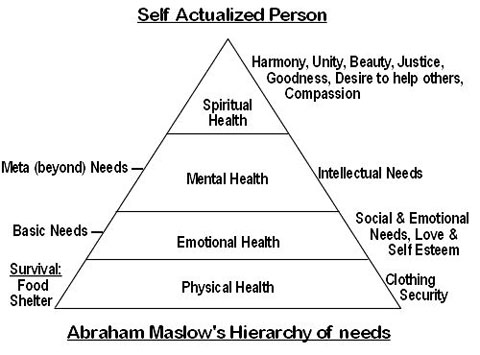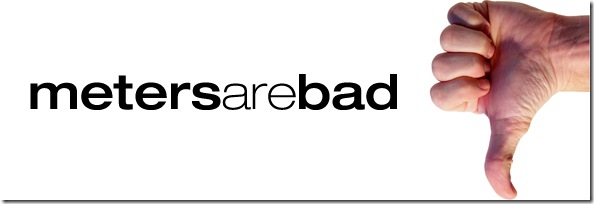
Successful guild masters and officers are always attentive to the concerns of their membership. It is your job to understand your guild’s psychological makeup and status. If your raiders are happy and enthusiastic, you’re probably aware of it, as people tend to be demonstrative about positive emotions. However, little worries and concerns can bubble below the surface of an otherwise stable guild, and, without the leadership ever being aware, a small problem can turn into a guild-breaking one overnight. How can you address these explosive problems before they grow to dangerous levels? Read on for some tips on eliticing–and dealing with–feedback from your members.
How Do I Get Them To Talk to Me?
Face it, Guild Master, you are one scary dude or dudette. You are The Man (or The Woman), and that means most people will tiptoe around subjects that might be controversial when you’re around. Rest assured, however, that your guild members have opinions, and they want the leadership to listen and to react to them. Here are four things you can do to get your guildies to tell you their little secrets.
1. Have Guild Meetings on Vent
Collateral Damage does this every couple of months, and it’s quite helpful. The officers start out with a little “state of the guild” address and then turn over the floor for member questions and concerns. Now, when it’s time for members to talk, don’t expect the discussion to start immediately. I learned through teaching my college classes that a little silence is ok at the outset of a discussion. People are getting their thoughts together and mustering the courage to speak. You can ask little questions to prompt them, but make sure you let people have time to get the ball rolling. From what I’ve observed, the first person to speak will say something really positive. Others will comment on it, but the feedback will start to roll in. Eventually, you may get people’s most passionate objections to your guild policies. The important thing in such meetings is to listen. Let people know that you will hear their concerns and take them to the table at the next officer meeting.
I can tell you, sometimes CD officers have felt frustrated and under-appreciated at our open meetings. Try to think beyond yourself and your immediate reactions. Is there something helpful you can learn from a person’s complaints? We’ve found that even the most ardent whiners aren’t able to sidetrack the guild from its most cherished goals. However, we’ve also discovered some useful information in open meetings. In at least two cases, at the next officer meeting, we changed policies based on public opinion.
2. Post Officer Meeting Notes
Officers spend a lot of time discussing policy in meetings–earn credit for that time with your members by posting notes. You don’t have to expose every controversy, and naturally, anything pertaining to specific players should be kept quiet. However, when you’re writing new policies, a little item in your notes that says something like “Discussed Revisions to Attendance Policy” will let your members know that the officers are actually responding to the changing conditions in the guild. CD allows members to comment on officer meeting notes–we get many good ideas this way.
3. Have a Feedback Forum
CD has a forum in which only officers can post and everyone can reply. The purpose is to elicit member opinion on major policies. Recently we have decided to implement a Raider Status and attendance requirement for Wrath of the Lich King. Our policy drafts went up in this forum, and there was a lively exchange between officers and members. We were able to clarify our intentions, and the final document is, as a result, very clean and easy to read. Of course, some members disagreed with the officers’ decision and thought that we should continue without Raider Status. We tried to assuage their (mostly unfounded) fears, but we did hold firm to what we had decided. However, some of those objections led to clearer policy, and as such, they were a very fortunate thing.
4. Allow Members to send PMs to Officers
Your guild website should have the capacity to send Personal Messages. These are like emails, only less formal. When CD members have personal complaints–either something they want to keep private or something that only affects them–the best way to communicate that is a PM to one of the officers. If they do not request that the note be kept private, often we share these with other officers so we get a balanced solution. A good example of this kind of issue is the perennial loot quandary. It has happened several times that a CD member has felt that loot was distributed incorrectly. Sometimes the members are right. Inevitably, things go a little bit awry with any loot system. These member issues have actually helped CD officers revise the loot system for Wrath so that it is more fair to all raiders.
The Two Types of Feedback
As a guild leader you can expect to get two types of feedback: legitimate concerns and QQ. Here is how I suggest that you address each type.
Legitimate Concerns:
Sometimes members are able to see around officers’ blind spots. Often the members are first to know when someone has been treated unfairly. Even in the best guilds, this can happen by accident! Make sure your policies are flexible enough to change if they are really not working.
Here are some common examples of legitimate concerns.
1. One of your guild members is behaving in an offensive manner or specifically antagonizing someone.
2. One of the guild policies has had unintended consequences. For example, there might be a loophole in your loot system, or you might be distributing BoE items like Hearts of Darkness in an unequal manner.
3. A specific member or subset of the guild is feeling overworked or burned out.
4. Something in your raid strategy is not getting desired results.
Sometimes you’ll get a PM and just know that the person has a valid point. When that happens, don’t panic. Reply to the person and let him or her know that the issue is going on the next officer meeting agenda. Make sure you talk about it, and make appropriate policy, rostering, or strategy changes.
QQ
The letters QQ are meant to resemble crying eyes, and QQ is synonymous with whiny complaints. QQ is constant and unavoidable. I am going to make a radical suggestion here for how to deal with this. As you read or listen to the complaint, try and imagine that it is legitimate. Even if you end up disagreeing with the person or even reprimanding her, hear her out before you do that. QQ is called QQ because it’s communicated in a less-than-constructive way. However, separate the content from the means of delivery to find out if, behind the tears and snivels, there is actually a valid issue to be addressed. If the person has a point, put their issue on the meeting agenda just like any other member concern.
The following is a list of issues people tend to feel passionately about in the game. As such, they are likely topics for QQ.
1. Loot Issues.
This will always be the number one cause of weeping and gnashing of teeth in the World of Warcraft. Most of these complaints are unfounded. If you have a loot council, you will be dealing with this often. Try to make the person reasonable, or at least resigned.
However, sometimes loot issues are very much legitimate. If someone is concerned that he consistently gets passed over for loot or that others of his class and spec with similar attendance have significantly better gear, he is probably right. Loot systems of whatever type tend to have loopholes through which many purples flow. These complaints are a way to discover if your system is really working the way you intended it to. It may be that “unlucky” players, or players in certain roles, truly are not getting their fair share. If this is the case, do something about it! Whenever you find injustice in your guild, stamp it out!
2. Personality Conflicts.
In a raiding guild of 35+ members, not everyone is going to get along. Members who are at the high end or the low end of the competence scale may attract a lot of complaints due to jealousy on the one end and resentment on the other. Evaluate each of these complaints for validity. As an officer, you need to know the difference between one of your raiders having a bad day, or a bad week, and just plain out being a bad egg who either does not play up to the standard of your raid or makes everyone miserable. You should also ask pointed questions to decide if harassment is involved. For example, if one of your female members is having to field consistent come-ons from a male raider, this is a legitimate complaint and you should probably kick him. Many guilds let rampant sexism, racism, and all-out prejudice go on in g-chat or vent. In my opinion, this kind of thing isn’t very funny–or very conducive to successful raiding. I would rather play in an organization that’s open to different types of members. Sure, Collateral Damage cuts loose a bit late night on vent, but on the whole we’re an organization that 10-year-old girls could happily and safely belong to. “Cutting loose,” by the way, is different from encouraging prejudice. No one minds a little innuendo or even well-meaning jokes at someone’s expense–the problem comes when members harass each other. As a guild leader, you should be able to tell the difference.
3. Bench Issues
The #1 topic of PMs sent to officers in Collateral Damage has to do with raid scheduling. Long story short, people want to be in when it’s convenient for them and out when its not. A lot of people feel frustrated that they’re not in full control of when they get picked to raid. For the most part, people just have to deal with it. Officers can lend a sympathetic ear, but we know that we have to balance the needs of many different people. Bench happens, more often than some people would like. However, if a person complains that they are consistently being passed over for a raid spot, you need to investigate that issue. Look at that person’s attendance and performance. Does he have a legitimate complaint? Has he been forgotten, or is there a deeper issue? Is someone getting preferential treatment and not sitting their fair share of time? If so, rectify that immediately. No one–especially not officers–should get out of sitting the bench. Sometimes, however, the raid leader is perfectly justified in sitting a player frequently, especially if he’s not performing up to the standard of the group. This can be a good opportunity for the class or raid leader to work with this person on improving his play. After all, raiders are supposed to want to play up to their potential. If that interest isn’t there, it could be time for a frank talk about that player’s status in the guild.
Conclusions:
Don’t fear feedback from your members. Embrace it, and deal with it in a timely manner. After all, you are in service to your guild members. They’re really not trying to ruin your day. When members complain, they do so because they care about the quality of their in-game experience. Never fall back on the “it’s just a game” excuse for unequitable behavior. Sure, it’s a game, but games have rules. They’re only fun if you follow them. One of the rules of being a GM is to create an environment your members feel comfortable in. Otherwise, you’re no better than the three year old who kicks over the Monopoly board and then sticks the house from Park Place up his nose.




